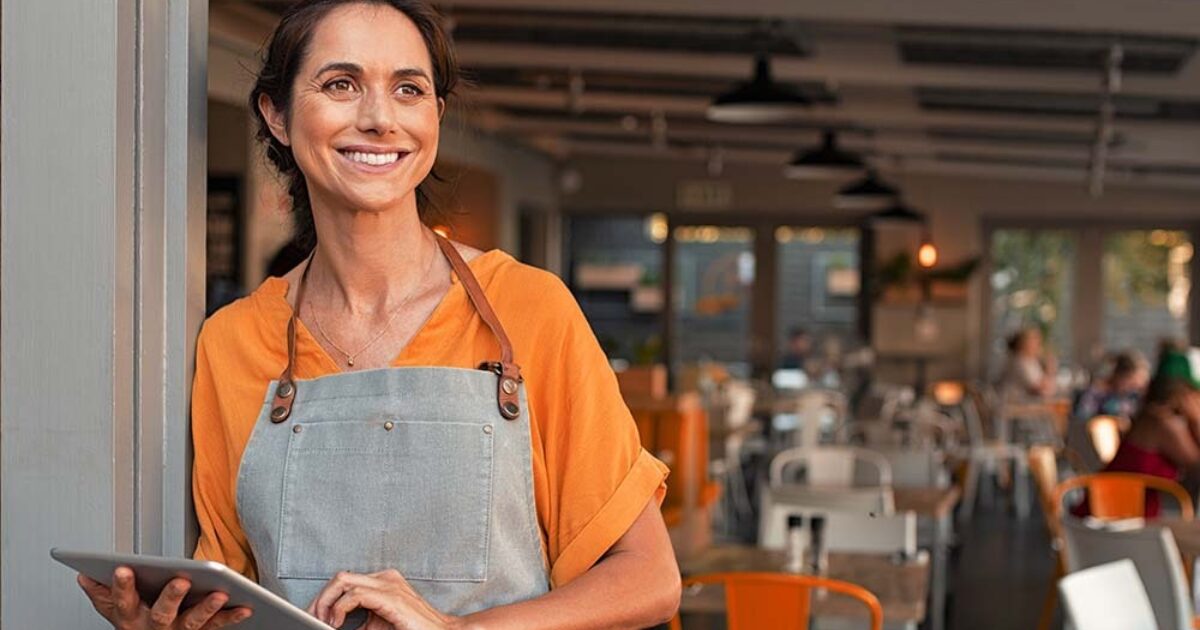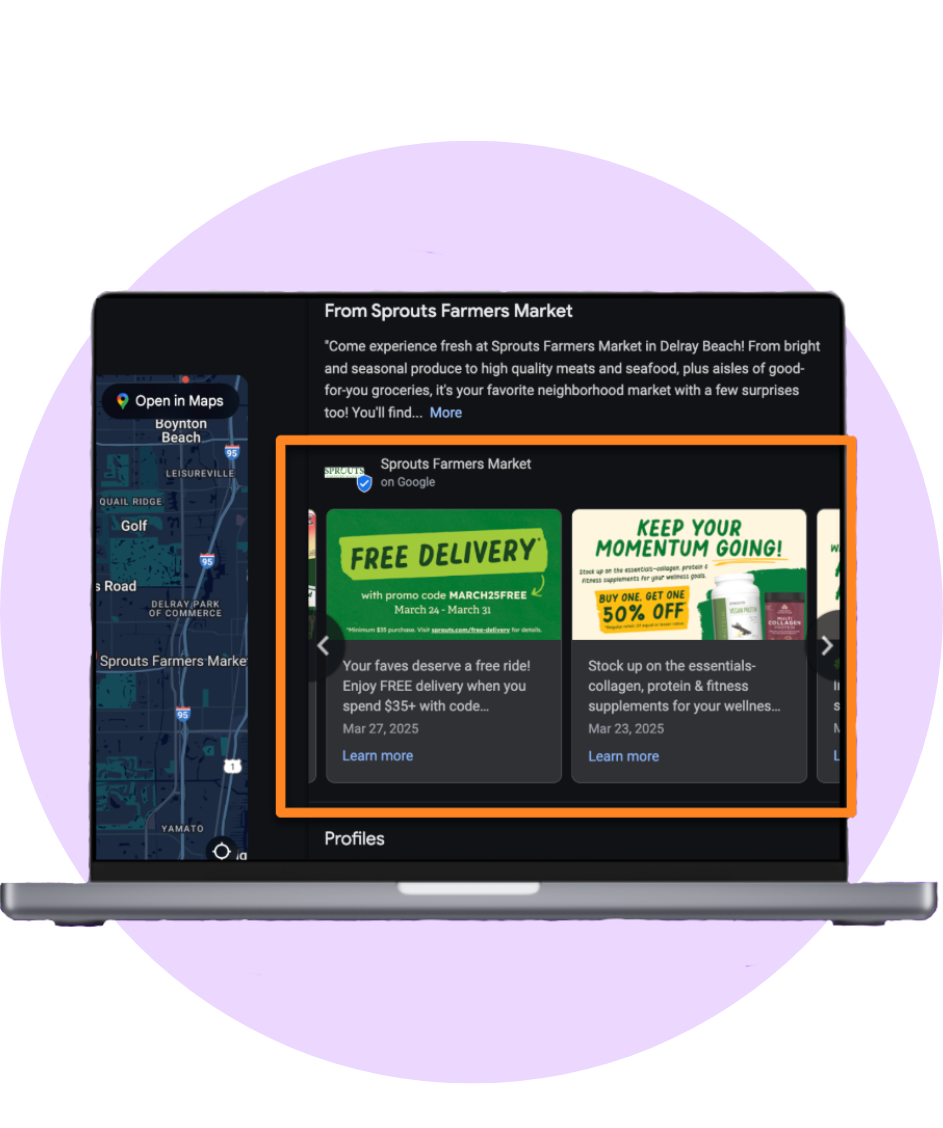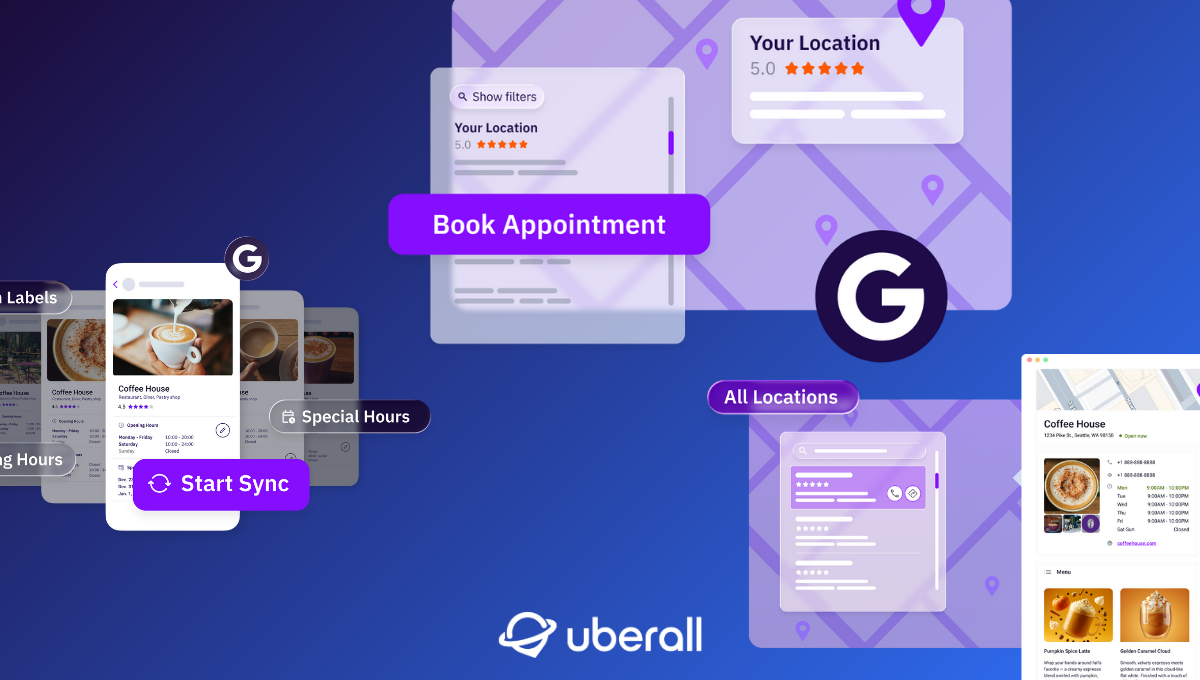
Restaurant Marketing Strategies for Teams with Multiple Locations
Consumers use mobile devices for 89% of dining research—but how can you ensure your restaurant is visible and ready for diners when they look?
Consumers aren’t all cutting down on discretionary spending due to high costs — they’re just getting more selective. A McKinsey report shows that around two-thirds of US consumers intend to spend the same or more on eating out, whether it’s a sit-down meal or a quick-service option, now and in the months ahead.
They want to spend their money wisely, and they’re looking for convenience.
The search query “food near me” saw an impressive 99% YoY increase last year, while “food near me open now” saw a mouth-watering (sorry, I couldn’t resist) 875% YoY growth. Diners are hungry and they’re hungrier than ever for accurate business information.
Today’s diners either
- make split-second decisions in the moment they’re about to go out for food — often between your restaurant and the one down the street — based on what they see online
- save recommendations from word of mouth, social media, or ChatGPT to their list for later
Wherever consumers are in their decision-making process, local search has become the most competitive space in hospitality. Being visible, accurate, and trusted determines whether your tables fill up or stay empty. The most effective restaurant marketing strategies weave these elements together — driving both customer acquisition and long-term retention.
Juggling plates and orders is one thing; juggling your location marketing tasks is another. Here’s how businesses — from quick-service restaurants to fine dining — can win in today’s online search.
1. Maximize Your Restaurants’ Visibility
Because this sector lives somewhere between necessity and indulgence, your restaurant has to do more than just exist. It has to stand out online.
In our recent conversation with hospitality marketing consultant Rev Ciaccio, who’s been working in the industry for 20 years, he explains:
“I don't think the majority of the population is opening up ChatGPT and going, ‘Where should I get hot wings tonight?’ I don't think we're there yet. I still think that’s a search function. I still think that’s a Google, Yelp, Bing, Yahoo, Foursquare, maybe Instagram, TikTok function. However, AI is watching the results of all those searches.”
Before any consumer today makes a reservation, enters your door, smells your food, or hears your daily specials, they have to find you online through these search functions. So, continue to make sure you show up there.
Google Business Profile
Our experiments with local businesses in the US have revealed that AI systems like ChatGPT consistently favor Google sources as top priority when generating recommendations and summaries. Even outside AI developments, Google Business Profiles are the deciding factor in being found through search — and that hasn’t changed.
So, as you should have been doing all along (but now with much more at stake), always ensure your business information is up to date and consistent across all your locations.
- Name
- Address
- Phone number
- Business hours
- Pick-up and delivery options
- Reservation information
- Dietary options
- Menu (via Menu Editor)
- Prices
- Categories (“Italian restaurant,” “seafood restaurant,” “vegan-friendly”)
- Attributes (“family-friendly,” “dog friendly,” “outdoor seating”
- Photos
- Reviews
- Posts
As searches become more specific – ”brunch spot near me with outdoor seating and lactose-free options,” businesses that adapt and become more helpful will win those customers.
Other Crucial Networks and Platforms
Just because I’m not giving each of these platforms its own section doesn’t mean teams should overlook their importance in their restaurant marketing strategies.
Make sure your restaurant’s information is identical and present across all major directories — conflicting or incomplete business details may prevent searchers from finding you at all.
- Bing
- Apple Maps
- Yelp
- Foursquare
- TripAdvisor
- OpenTable, Olo, and other industry-specific directories
Being present here also has positive implications for your business in terms of LLM visibility. And remember: Whether in traditional or AI search, the more consistent your presence, the more you’ll appear — and the more bookings and orders you’ll generate.
Finally, investing in high-quality photos will help you win consumers right now. From close-ups of signature dishes to shots of your team in action, visuals tell your story before the first bite. As Rob Tindula writes in a Search Engine Land article: “large language models don’t deliver a good local search experience … results are vague, lack images, and often list places that aren’t even nearby.”
So give your potential customers a figurative taste of your offering before they literally taste it.
2. Build Reputation Through Reviews
In the restaurant world, reputation is everything. You can have the best risotto in town, but if your reviews are mediocre or unanswered, or if your business looks inactive online, diners will scroll straight past you.
Our consumer data, based on consumers across the US, UK, Germany, and France shows that every star, every comment, and every response directly influences your foot traffic.
While restaurant brands are averaging a solid 4.07-star rating, according to our latest report, the top performers exceed 4.9 — because they turn their customers’ mealtimes into meaningful experiences.
But it’s not just what your reviews say that matters. It‘s how many you receive, how frequently you receive them, how many you reply to, and how quickly you respond. Again, Rev Ciaccio backs this up when he tells us:
“Reputation management is probably actually digitally more important than it ever has been. I do think people are going to search for ‘What do you know about this restaurant?’ and so that query is going to look at reputation. That query is going to look at what people are putting on social media.”
Our data tells a clear story: The average restaurant receives 5.96 reviews per location per month, while top performers see around 542. Population and seasonality will influence those numbers, of course, but the key takeaway is that consistency drives reputation and visibility.
Restaurant marketing strategies should also look at
- Review velocity: How frequently you receive new reviews also impacts local rankings. The more recent and consistent your feedback, the higher you’ll appear in search.
- Review responses: The best-performing brands reply to nearly every review — top performers hit 99%, compared to the industry average of 61%.
- Response speed: Quick responses count. Businesses that reply within five minutes are more likely to rank higher in local search results.
The good news is that there are review management platforms that help monitor reviews, analyze customer sentiment, and scale well-crafted, on-brand, human review responses. Whether you’re celebrating great feedback or addressing criticism, it’s important you show up authentically.
When it comes to asking customers to leave reviews, Google now makes it easier than ever. Use QR codes that link directly to your review page or set up automatic prompts after visits. Encourage customers to share feedback on Google, Facebook, Yelp, etc. A lot of customers are willing to recognize positive experiences.
3. Engage Online and Offline
Engagement is the part of your restaurant marketing strategy that keeps guests hungry for more — not just for your food, but for your brand.
The best restaurant experiences start long before the first bite. Every touchpoint, from your menu to your social channels, is a chance to connect, demonstrate your E-E-A-T signals, build community, and turn casual diners into customers who crave your experiences regularly.
Social Messages and Posts
First things first: Make sure you’re monitoring and responding to business messages on platforms where you are active, such as WhatsApp, Facebook Messenger, or social media. Customers often message you directly from your profile — whether they’re confirming a reservation, checking dietary options, or asking if you have space for a large group.
Many businesses also overlook posting on their Google and Apple Maps profiles, but fresh, hyperlocal, helpful profiles tend to engage customers more — and they perform better in traditional and AI search. Especially, when customers are looking for the posts they want to see: promotions, special offers, and events.

Images and Videos
Consumers today expect your restaurant to have an active social profile where it matters. Authentic local content — especially when posted consistently — drives engagement and loyalty.
Our report shows us that this year, engagement rose across nearly all social platforms — Instagram, Reels, TikTok — compared with last year. Restaurants that post hyperlocal, visual, and relevant content on their socials quickly stand out in crowded feeds. They post images and videos about
- Weekly specials, deals, promotions
- Team stories
- Behind-the-scenes peeks
- Exclusive neighborhood events or charity events
- Delicious new dishes
- Community influencers
- Local partnerships
- Loyalty or birthday deals
- Food challenges
The important thing to remember is that social media is not necessary in your restaurant marketing strategy as an acquisition tool – but a retention tool. As Rev Caccio explains: “Nobody follows a restaurant on Instagram unless they’ve either eaten there or they plan to.”
And if you’re already making Reels or short-form videos, you’re all set for repurposing them on YouTube, which you can also connect with your Google Business Profile. If you want more tips on this, I recommend checking out this article on Search Engine Land, which talks you through the benefits of restaurants creating content in the form of YouTube shorts.
4. Make it Easy to Convert for Every Meal
Every click, call, and direction request is a sign of high intent — and intent moves fast when it comes to hungry consumers.
That’s why conversion isn’t about luck — it’s about removing every ounce of friction between “this looks good” and “let’s go.”
In the first half of 2025, restaurants averaged:
- 1,488 direction clicks per location — proof that in-person dining demand is thriving
- 1,049 website clicks — as customers browse menus, photos, and booking options
- 510 calls — from diners confirming hours, checking wait times, or reserving a table
Top performers, however, leave averages behind: some locations drove over 55,000 direction clicks, 80,000+ clicks to the website, and nearly 10,000 calls. What sets them apart was seamless, consistent, and optimized digital touchpoints — across listings, websites, and apps — that make it effortless for customers to act.
So start with your Google Business Profile. Make sure every location lists clear ordering and reservation options — links to delivery partners, “Order Online” buttons, or direct booking integrations. These simple additions dramatically increase on-the-spot conversions from search results.
Your website still plays a central role, especially for customers looking beyond “open now” searches. A mobile-optimized, fast-loading site with easy navigation, up-to-date menus, and visible CTAs (“Reserve Now,” “Book a Table,” “Order for Pickup”) removes hesitation and captures intent while it’s hot.
And don’t overlook the basics:
- Keep phone numbers accurate and calls answered quickly.
- Use location-specific landing pages with photos, maps, and unique content to boost confidence and SEO.
- Connect your listings, social posts, and email campaigns back to your local pages — creating one seamless path from discovery to decision.
Conversion isn’t a standalone metric — it’s the natural outcome of everything you’ve optimized along the way. When visibility, reputation, and engagement work in sync, conversion becomes effortless.
That’s the essence of Location Performance Optimization (LPO): turning every local interaction into measurable business impact. A complete, consistent, seamless digital presence doesn’t just drive more clicks — it fuels long-term loyalty, higher ROI, and repeat visits.
From Searching to Ordering: The Strategies That Survive
Every week, we read about multi-location restaurants and QSRs closing sites, declaring bankruptcy, and struggling to survive. Yet it’s not that consumers have stopped spending — they’re just more selective. They choose the obvious choice, the top choice, every time they eat out.
Adapting to this new reality means understanding that both Google and AI systems crave content and accurate business information — and so do your customers. Today’s diners search, scroll, and decide where to eat in seconds, often through Google Maps, social media, or word-of-mouth recommendations.
Every channel you optimize strengthens your credibility, visibility, and connection with hungry customers. That’s how restaurants today stay resilient — by remaining discoverable, desirable, and chosen again and again.
Ready to Transform Your Business?
Connect with our partnership team to learn how Uberall can help you achieve similar results. Get a personalized consultation and discover the opportunities waiting for your business.
Resources











